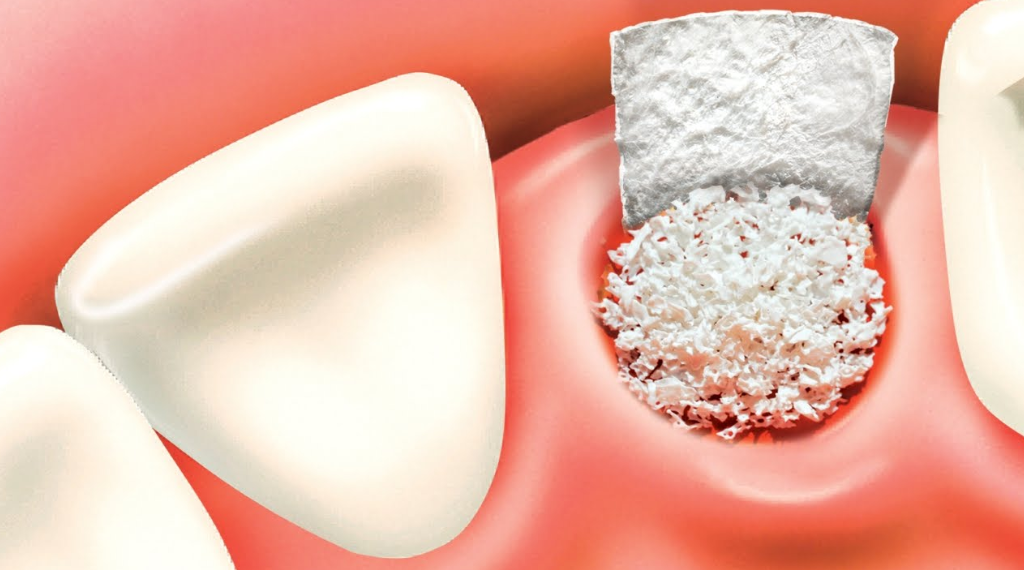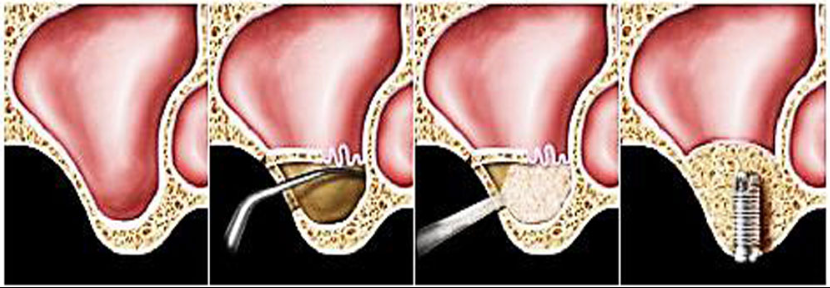Bone grafting for dental implants
If you’re looking to replace your missing teeth with dental implants, chances are you will require a grafting procedure beforehand. Grafting is a procedure used to restore your missing jawbone prior to placing dental implants. The reason you need grafting is because often times there is a lack of sufficient jawbone to support your dental implants. Grafting restores your missing jawbone and allows your dentist to successfully place dental implants in your jaw. The type of grafting that you require depends on the location of your missing teeth and how much bone you’re missing. Let’s review a few common grafting procedures commonly used prior to dental implant placement:
(1) Bone graft

Bone graft is a very common procedure that is used to restore or preserve your missing jawbone. The purpose of bone graft is to assist your jawbone in regenerating bone. Bone grafting may be performed at the time of tooth extraction to preserve your tooth socket. It can also be performed in conjunction with implant placement to assist your jaw in regenerating more bone surrounding your dental implant. There are different types of bone graft material which include cadaver bone (allograft), pig bone (xenograft), synthetic bone (calcium hydroxyapatite), and bone obtained from your own body (autograft).
(2) Block graft
Block grafting is a more complex bone grafting procedure that is used to replace more advanced jaw defects. If you’re missing a few millimeters of your jawbone, then a simple bone graft should get the job done. However, if you’re missing most of your jawbone within a region, then you require a block graft instead. Block grafts are much more complicated than traditional bone grafts. They usually require the use of fixation screws, membranes, or metal mesh to secure and stabilize your graft during the healing process. Block grafts are typically obtained from animal sources or from your own jawbone. Oftentimes, they are performed in conjunction with other treatments, such as a Platelet Rich Fibrin (PRF). These procedures help improve the chances of bone growth and soft tissue regeneration in your jawbone.
(3) Sinus lift
Sinus lift is a procedure used to grow bone to replace upper back teeth. The upper back teeth are located in an area that usually lacks sufficient bone to support dental implants. This is due to the presence of sinus cavities. During a sinus lift, your dentist elevates your sinus membrane. Then they add bone graft in this region to increase your available bone. Once your graft has healed, your dentist can now place a large enough dental implant without worrying about damaging your sinuses.
(4) Lateral wall sinus graft

Lateral wall sinus graft is a sinus lift procedure reserved for cases with almost no bone underneath the sinuses. To perform a lateral wall sinus graft, your dentist must create a small hole in your upper jawbone. Then he or she manually pushes your sinus membrane up and adds a significant amount of grafting material. This is a different technique than traditional sinus lift, making it a much more difficult and costly procedure. The recovery process usually takes about one week and requires plenty of rest and relaxation. Be sure to avoid blowing your nose, using a straw, or doing anything that places excessive pressure on your sinuses.
How much do grafting procedures cost?
Grafting procedures are not inexpensive, however, they are a necessity to successfully placing dental implants in your mouth. The cost of grating procedures usually depends on the complexity of your treatment. A simple bone graft for one missing tooth usually costs a few hundred dollars. On the other hand, a block graft or lateral wall sinus graft to replace multiple missing teeth typically costs a few thousand dollars. Block grafts and lateral wall sinus grafts cost significantly more due to the complexity of these surgeries. Also, there is a higher cost of graft material, membranes, and fixation screws, which contribute to the higher costs.
Want to find a dentist for grafting and/or dental implants?
More and more dentists are performing their own dental implant surgeries these days. Additionally, specialists such as oral surgeons and periodontists specialize in placing dental implants and grafting procedures. Replacing your missing teeth has become much more affordable and convenient than it used to be back in the days. Click on the link below to use our dentist Search Engine to find a dental implant specialist near you today:
0 Comments